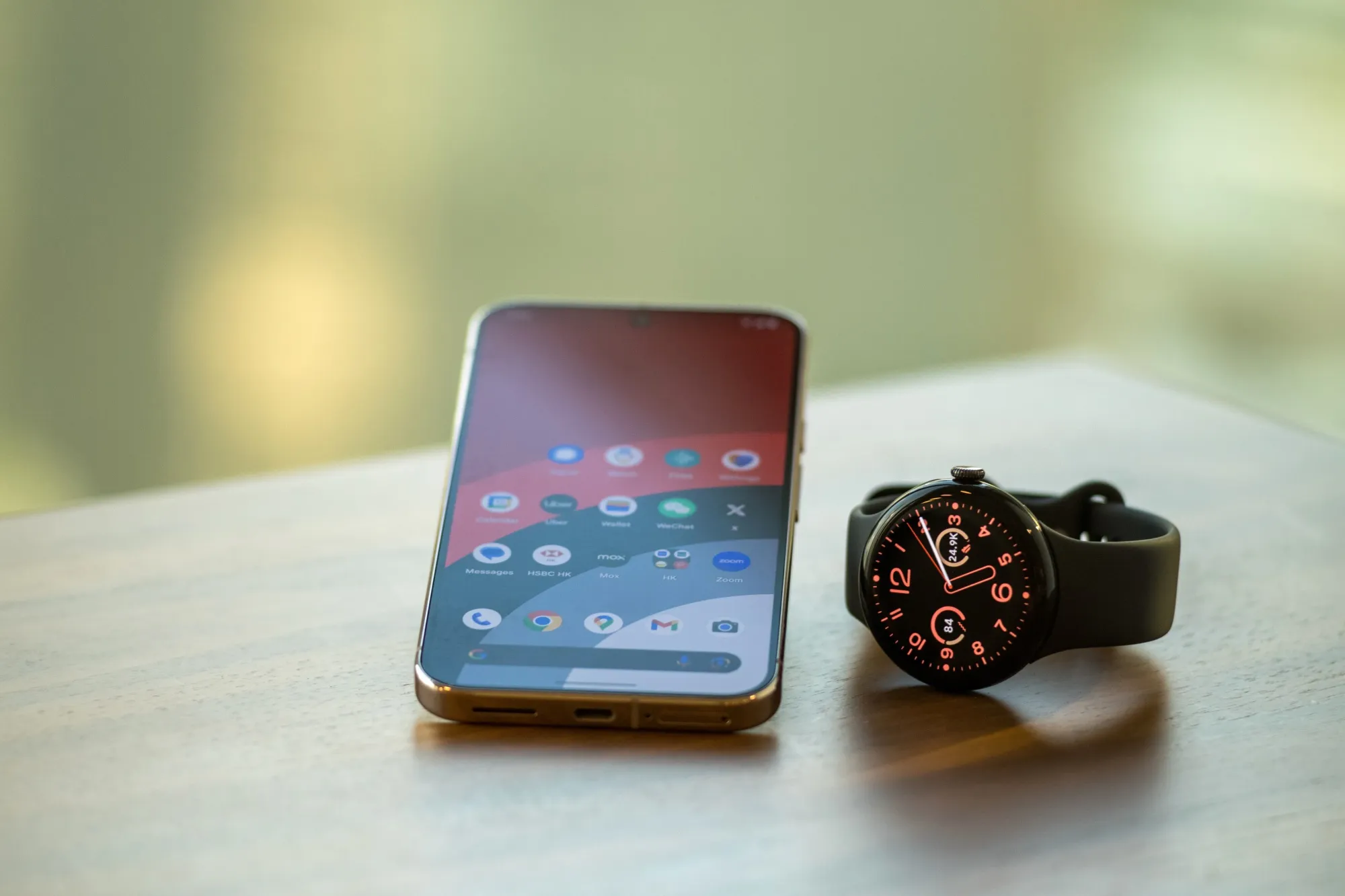
Gift this article
In this Article
Follow
Follow
Follow
Follow
Have a confidential tip for our reporters? Get in TouchBefore it’s here, it’s on the Bloomberg Terminal LEARN MORE
By Vlad Savov
September 16, 2024 at 7:00 PM GMT+7
Save
Listen
6:55
Google is serious about hardware. Or so the company has claimed every year in the near-decade it’s been releasing new Pixel devices, products meant to showcase the latest and best that its Android software has to offer. But sales have never lived up to the rhetoric or marketing budget, as the Alphabet Inc. unit has failed to lure consumers away from Apple Inc.’s iPhone and Samsung Electronics Co.’s Galaxy range.
Artificial intelligence fever gives Google a fresh opportunity. The company has a long head start in AI over anyone else selling smartphones today, Apple included, and it has leaned into those credentials by highlighting its Gemini AI suite on the new Pixel 9 device family.
Why Now?
Google shifted from its usual October release window to August this year. Instead of showing up in the wake of iPhone excitement — scheduled like clockwork for each September — it decided to jump out in front and offer an AI smartphone that’s better and available sooner than the AI-ready iPhone. Or so the thinking goes. At a minimum, it shows greater confidence from a company that has at times seemed ill at ease with the idea of too brazenly competing with its Android partners.
In April, Google announced a significant change: Rick Osterloh now oversees both the Android operating system and the Pixel hardware development and engineering group. That’s the closest anyone has yet come to replicating Apple’s unified software and hardware development approach. This year’s product rollout is also Apple-like: an all-in-one debut for the new phones, smartwatches and earbuds, underscoring the idea that Google is building a cohesive ecosystem.
What Works
The new Pixels are Google’s most refined smartphones to date. Gleaming metal surrounds the $999 Pixel 9 Pro, which combines an all-screen front with a frosted glass back and makes a feature of its chunky camera bar that contains various lenses and sensors. It’s not an iPhone copycat, but it can be easily confused for the new iPhone 16. The design is understated and unfussy, offering a minimalism that runs across Google’s product range, with the newest Pixel Buds also getting slimmed down and simplified this year.
Whether people buy the Pixel 9, 9 Pro, 9 Pro XL or 9 Pro Fold, they’ll get the best Android experience available today. That’s the power of developing software, services and hardware — including Google’s AI-ready Tensor chip — in sync. You’ll get perks like extra editing options in Google Photos, trial YouTube Premium and Fitbit Premium subscriptions, and guaranteed software updates for several years.
The $350 Pixel Watch 3, now also available in a larger 45-millimeter size, has a similar vibe to the phones — it’s a smooth black pebble with a screen that’s easy to read even in the sunniest of conditions. Its look is deliberately polished, far from the chunky and overtly techie appearance of something like Samsung’s Galaxy Watch Ultra. It’s an aesthetically versatile design, appropriate for both a run in the park and a dress-shirt evening gala.

Where Samsung, Xiaomi Corp. and other Android vendors spend time duplicating Google’s apps and software, Google can focus on implementing more features and integrating them directly into the operating system. Google Lens, which helps identify and search for items on the user’s screen, along with automatic transcriptions and translations, are a couple such examples. The Google Assistant now uses Gemini AI to respond to voice queries, making it easier to have (sort of) a conversation with the Pixel phone or watch.
Since the first Pixel handset debuted in 2016, Google’s cameras have been the best example of how its AI integrations give it a leg up on the competition. With the Pixel 9 family, that remains a strength. Google’s software captures moving subjects, such as people or animals, with a precision that even professional cameras struggle to replicate. It produces excellent nighttime shots and handles all skin colors faithfully. New features like the Add Me function — which stitches together two photos so the photographer can be in the shot as well — make for the most complete and reliable camera system on the market.

The displays on both the handsets and the Pixel Watch offer superb color accuracy and faultlessly smooth operation. The quality of the hardware and general user experience are difficult to distinguish from Apple’s standard-setting iPhone.
The Catch(es)
To avoid disappointment, Pixel buyers should dismiss most of this year’s AI hype as hot air. That Gemini-enhanced Google Assistant is still not very smart. It failed to handle queries such as “show me the baby photos on my phone,” “open Spotify to play Pod Save America,” “can you set up a news alert about Boeing?” or a request to unsubscribe me from a news outlet’s emails. When asked to send an email to a colleague, the Assistant responded that it “can’t send texts with Gmail yet.”

Get the Singapore Edition newsletter in your inbox.
Go beyond the headlines with insights into one of Asia’s most dynamic economies. Delivered weekly.
Bloomberg may send me offers and promotions.
Sign Up
By submitting my information, I agree to the Privacy Policy and Terms of Service.
A new app on this year’s phones is the Pixel Studio AI image generator. It’s still in a beta state and Google promises it won’t generate humans in images until it’s properly calibrated. Well, that guardrail was broken several times in Bloomberg’s testing, including the production of a voluptuous Disney-esque character when asked to depict a female lobster. The generator also made several rudimentary mistakes — a “show me three cats” prompt returned two cats — and seems to be far behind industry leaders like Midjourney or OpenAI’s Dall-E.

The Pixel Watch is an earnest attempt to recreate the smooth interoperability of the iPhone and Apple Watch, but fails on a number of fronts. Among them, the watch’s health-tracking features often require the phone to be in range to update data readouts on the watch face. Plus, many features on the watch eventually lead to an “open on phone” instruction. Downloading music to the watch is also fiddly and unintuitive — and the YouTube Music app had repeated issues with playback stuttering.
There’s a measure of range anxiety with Google’s latest phones and watches. The Pixel 9 Pro XL’s battery runs down noticeably faster than that of the Pixel 8 Pro. The Pixel Watch 3 doesn’t have the endurance of Samsung’s Galaxy Watch Ultra and drains quickly during workouts, even without GPS enabled. Both can comfortably make it through an active day out and about, but they require a recharge too often for comfort.
The Takeaway
In a year of supposedly AI-first smartphones, Google’s latest Pixels exemplify the rush to market with unready features. The Pixel Studio is underwhelming; the Google Gemini assistant is even more so. Much like with the latest iPhones, whose Apple Intelligence features are coming out in a post-release trickle, Google is offering very little in the way of AI to compel an immediate purchase.
But while the ambition to draw users in with AI innovation falls flat, Google can still claim to have the most Apple-like ecosystem of products and services, and this year’s lineup is the best it has released yet. Its new set of gadgets have the design, refinement and performance to compete directly against Apple’s best. For anyone not already wedded to the iOS and iMessage ecosystem, the Pixel family offers the nearest Android alternative.
For Google, which now seems willing to cannibalize the market for its Android partners like Samsung, the bet is clear. If the future of computing is to be driven by the close integration of AI, software and hardware, Google needs to be the one building the future iPhone rival. The Pixel 9 generation is just the beginning of that contest.
— With assistance from Dana Wollman





